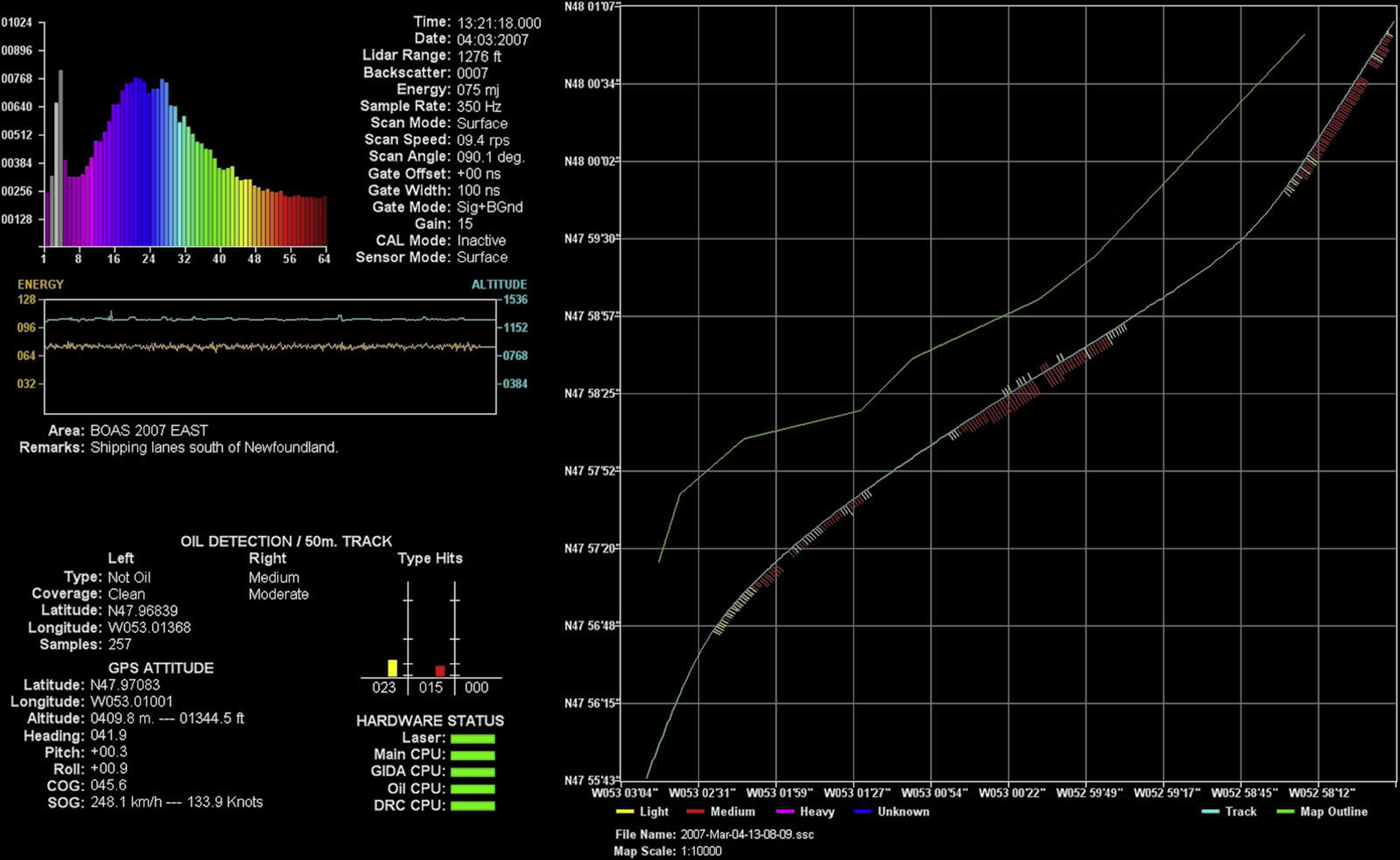Laser Fluorosensors
Abstract
Laser fluorosensors have shown significant potential for the remote sensing of petroleum oils because they can discriminate between oiled and unoiled situations, and detect oil in a variety of marine and terrestrial environments including on water, snow, ice, beaches, and with debris and weeds. Tests on shorelines show that this technique is very successful. Laser fluorosensors have been developed over the past four decades for the purpose of airborne surveillance and monitoring of oil spills, and the exploration of marine petroleum resources. Laser fluorosensors have gone through a progression from experimental to operational sensor that provides both a positive indication of oil and a classification of oil type. This chapter provides a brief introduction into the principles of operation of laser fluorosensors, oil detection and classification, brief details of existing operational units and aircraft requirements, and closes with some cost estimates.
Keywords
7.1. Principles of Operation
7.1.1. Active Versus Passive Sensors
7.1.2. Sensor Features
7.1.2.1. Excitation Source and Wavelength Selection
7.1.2.2. Detection System
7.1.2.3. Range-Gating
7.1.2.4. Field-of-View—Fixed Versus Scanning Systems
7.1.3. Advantages/Disadvantages
7.2. Oil Classification
7.2.1. Real-Time Analysis
7.2.2. Sensor Outputs
7.2.2.1. Spectral Data
7.2.2.2. Map Display
7.3. Existing Operational Units
7.3.1. Airborne
Table 7.1
Some Fluorsensors in Production, Past and Present
| Model | Manufacturer | Status | Scanning | Time Resolved | Activation Laser | Wavelength (nm) | Detection Range (nm) |
| LFS-P | Optimare | Current | No | Yes | Tri-YAG | 355 | 355–705 |
| TRLFS | Optimare | Operational | No | Yes | Tri-YAG | 355 | 355–705 |
| LFS light | Optimare | Operational | No | Yes | Tri-YAG | 355 | 355–705 |
| IALFS | Optimare | Operational | Yes | Yes | Excimer | 308 | 332–685 |
| SLEAF | Environment Canada/Barringer | Retired | Yes | Yes | Excimer | 308 | 330–610 |
| LEAF | Environment Canada/Barringer | Retired | No | Yes | Excimer | 308 | 332–685 |

| Model | Manufacturer | Detection Range (nm) | Channels | Weight (kg) | Size (L × W × H), (m) | Power Amps at 28 V | Typical Operating Altitude (m) |
| LFS-P | Optimare | 355–705 | 15 | 45 | 0.4 × 0.6 × 0.3 | 20 | 300 |
| TRLFS | Optimare | 355–705 | 15 | 133 | 1.1 × 0.5 × 0.5 | 43 | 300 |
| LFS light | Optimare | 355–705 | 12 | 120 | 1.4 × 0.78 × 0.5 | 70 | 300 |
| IALFS | Optimare | 332–685 | 12 | 290 | 1.6 × 1 × 1.4 | 110 | 300 |
| SLEAF | Environment Canada/Barringer | 330–610 | 64 | 450 | 2 × 1 × 1 | 200 | 300 |
| LEAF | Environment Canada/Barringer | 332–685 | 64 | 200 | 1.5 × 0.7 × 0.7 | 75 | 100 |










